Subscribe to The Podcast by KevinMD. Watch on YouTube. Catch up on old episodes!
Endocrinologist Michael Morkos discusses his article “Mastering the art of efficient patient encounters: tips for physicians.” Michael shares practical strategies for optimizing the patient encounter to enhance both efficiency and patient satisfaction. He delves into effective documentation techniques, emphasizing the importance of maintaining eye contact while touch-typing in the exam room, and adapting clinic setups with adjustable carts and laptops. Michael explains his system for ordering future labs during visits in lab-heavy specialties like endocrinology, ensuring all necessary data is available for follow-up appointments. He also outlines his streamlined EHR workflow, including pre-charting, side-by-side review of outside records, and transparent patient communication during the visit. Michael highlights how these methods enable him to complete all notes and charges by the end of the day, significantly reducing after-hours work and contributing to burnout prevention.
Our presenting sponsor is Microsoft Dragon Copilot.
Microsoft Dragon Copilot, your AI assistant for clinical workflow, is transforming how clinicians work. Now you can streamline and customize documentation, surface information right at the point of care, and automate tasks with just a click.
Part of Microsoft Cloud for Healthcare, Dragon Copilot offers an extensible AI workspace and a single, integrated platform to help unlock new levels of efficiency. Plus, it’s backed by a proven track record and decades of clinical expertise—and it’s built on a foundation of trust.
It’s time to ease your administrative burdens and stay focused on what matters most with Dragon Copilot, your AI assistant for clinical workflow.
VISIT SPONSOR → https://aka.ms/kevinmd
SUBSCRIBE TO THE PODCAST → https://www.kevinmd.com/podcast
RECOMMENDED BY KEVINMD → https://www.kevinmd.com/recommended
Transcript
Kevin Pho: Hi, and welcome to the show. Subscribe at KevinMD.com/podcast. Today, we welcome Michael Morkos. He’s an endocrinologist and the author of the book, No Work After Hours: Tools to Maintain a Pleasant, Efficient, and Productive Clinic Without Work Before or After Hours. There’s an excerpt from that book on KevinMD. Michael, welcome to the show.
Michael Morkos: Thank you so much, Kevin, for having me today.
Kevin Pho: Just briefly share your story and journey, and talk about what led you to write this book in the first place.
Michael Morkos: I think about those coming to medicine as one of two paths: medicine or surgery. In medicine, we take pride in having long-term relationships with our patients, and we take pride as well in having long encounters and taking care of whatever a patient needs in between visits as well. I found that I was struggling with a lot of work before and after hours, with a never-ending in-basket and phone calls and long encounters, and having to finish charts and notes after hours. I was not very eager to leave medicine and look for alternative careers, so the question was: how can we make it an efficient process while maintaining excellent outcomes?
Kevin Pho: Wonderful. And like you, I’m in a cognitive specialty, internal medicine. I do primary care, and the story that you share resonates with a lot of us. You have what’s called pajama time, where you have to finish your charts late into the evening. I’m interested in hearing some of your tips. On your excerpt, you talk about tips for physicians in mastering the art of efficient patient encounters. Just share that article and talk about it for those who haven’t had a chance to read it.
Michael Morkos: In the few tips that I shared in the article, the dream that I had was: how can I start on time and finish on time? No pre-charting, no work after I leave the clinic. So I pre-chart before I see the patient. And then how can I finish the note, all of the orders, labs, imaging studies, and prescriptions during the encounter?
By the time the patient leaves, I’m done with all of that, including my note and the charge. The patient is done, I’m done. The next patient is done. By 4:00 PM, I’m done with 4:00 PM. I leave. I don’t have any work after that.
Michael Morkos: For the proposal I had in the documentation, you have different ways to do it. Some like dictation, so they’re going to finish the encounter and go after that and dictate their note, which means the encounter now is longer. Some are more efficient in that they write in the patient encounter, but the problem gets to be that they face the computer screen. They are not maintaining eye contact, so the patients are not happy, they’re not satisfied, and they don’t feel heard. If we are not maintaining eye contact, I will not feel that you’re hearing me or respecting my presence.
And some will rely on AI, which gets to be very interesting and very helpful. What I found is a problem with AI, or whatever AI model is being used, is that they generate paragraphs. They don’t have bullet points, or at least so far. And I guess being obsessive with my note, and I like it in a certain way, AI doesn’t suffice, or at least so far, where I am.
So the proposal I had is to have the physician have a cart with a laptop. When a patient comes in, I’m going to bring that cart down. I’m going to face the patient. The computer is going to be at a lower level, and while the patient is talking, I’m touch-typing, so I’m maintaining eye contact and I’m finishing everything. Then, by the end, in the assessment and plan, I write out loud what I’m writing as the assessment and plan and in the instructions. So when the patient leaves, they have written instructions with everything I said, and my note is done as well.
Kevin Pho: So how long have you been using this system for?
Michael Morkos: Six years now.
Kevin Pho: And how fast do you type? Because I can imagine if you touch-type your entire note, including the history of present illness and the assessment and plan, sometimes even when you’re facing and talking to the patient, you have to type pretty quickly to get that done in real time.
Michael Morkos: And also, I write less, so I don’t write long paragraphs. When I learned touch-typing, that was while preparing for the clinical skills exam for the U.S.M.L.E., so I didn’t have it growing up. Back then, I was touch-typing 15 to 20 words per minute. Right now, I go anywhere from 50 to 80 words per minute.
Kevin Pho: And then after the patient leaves, your entire note is complete? You don’t have to do any editing or proofreading afterwards?
Michael Morkos: No, I’m done. Truly, the patient leaves and I’m done. It’s a growing and learning curve, which is interesting that I track. You know, you get these reports from HR on how long the patient visits are. I guess the one who benefited the most from the books I wrote is me, because I can see that my speed in the visit, while maintaining great clinical outcomes and great patient satisfaction, of course, is increasing. The patient visits are shrinking.
My documentation is faster. My orders… I mean, the two other things that I talked about are orders and EHR workflow. I guess I have a computer engineer in my heart. That’s why I like the EHR so much. Having order panels instead of searching for each single order every single time with every patient made my life far faster. Adjusting my workflow and seeing what my workflow is and adjusting the EHR to be the fastest for what I do made a huge difference in speeding up my abilities and allowed me to see more patients while still finishing on time.
In my practice, we had 20-minute slots for established patients and 40 minutes for new patients. I found that I’m finishing seeing the patient in five to 10 minutes and I’m just sitting, doing nothing. So I was able to add more patients while not overloading myself.
Kevin Pho: And I think the key is the ergonomics of your office visit. You mentioned a cart where I assume you have a laptop, and you have the screen positioned in a way where you can do the touch-typing but also maintain eye contact with the patient. You’re facing the patient as you’re typing out your note.
Kevin Pho: Talk to me about AI scribes, because that’s all the rage now, right? It’s advertised as a solution where clinicians can reduce their cognitive load and maintain eye contact with the patient. Full disclosure here, this podcast is sponsored by one of these systems, the Microsoft Dragon Copilot. You mentioned that you had an experience with an AI scribe, but the notes that it generated weren’t to your customization.
Michael Morkos: AI, I believe, has a great role. We are so different, and some of us have skills that others don’t have. For someone who’s slammed and far behind in everything, it may offer a great solution. But I found that for the notes from my colleagues, I don’t read paragraphs. I cannot; I don’t have time for that. I would prefer bullet points or very short paragraphs. AI right now will give you longer paragraphs.
The other thing is, sometimes the discussion includes a lot of social issues as well. Now, some systems are smart enough to extract the social things and bring only the medical. It may be useful in the HPI, that’s for sure. But in my assessment and plan, which is the most important thing, I have a system which I think is logical. I start with: what are the presenting symptoms and signs? What is the workup, including labs and imaging studies? And then, what is my analysis of that? Eventually, I go to the treatment.
And in the treatment also, you manage hypothyroidism, right? All the time. So how I like to do it is, in October 2023, I started with a hundred micrograms. It led to a TSH of 4.5. So in January of the following year, I went to 125 micrograms. It went to a TSH of 1.0. We continued that, and then out of the blue, the patient gained 30 pounds, so now the TSH is seven. So now, in October of 2024, I adjusted to 175 micrograms and see the result. In just briefing that note, I can tell what I did initially and how things are going. AI will not do that.
You see my point? So how can I make it brief? How can I make it very efficient? I will not go to the older notes. I have everything done. Can we have collaboration? Absolutely. Can I pick and choose what to put in and what not to? Absolutely.
Now, in my subsequent visits, I end up having all of the prior history that is relevant under “initial history.” So initial history is always copy and paste, and then I have an interval history that gets to be one to two lines: what happened since the last visit? And my assessment and plan is copy and paste, and I just tweak. So I truly don’t spend a lot of time. Things get to be very fast.
Kevin Pho: What advice do you have for physicians who aren’t accurate and fast touch-typers? Because it sounds like your system is predicated on the fact that one is an accurate and fast typer. A lot of physicians aren’t. What kind of recommendations do you have for them?
Michael Morkos: For them, there are two ways that we usually go. The first is the easier way, which is work smart, not hard. And then there’s the more difficult way, which is work hard. I love working hard in a smart way.
I love developing new skills that I didn’t have before if they’re going to take me in the right path. Learning to touch-type takes time. I mean, it took me maybe 20 minutes every day for a month, not investing hours and hours, but it is a skill that can go a long way.
If you cannot touch-type, AI can be great for the initial history, but in all of the subsequent visits, we truly don’t need that. The interval history is just one to two lines. The tweaks in the assessment and plan don’t take time. But developing a system where we can get more efficient while being more effective and facing the patient, not giving the patient our back because the one who designed the room put the computer against the wall, can just go a long way.
Kevin Pho: You also mentioned that when you do the assessment and plan, you’re doing it in real time and talking it out with the patient as you’re typing it. I love that transparency. Tell us some of the advantages of doing it that way.
Michael Morkos: The first advantage is having no surprises with the patients. Now, after the Cures Act came out, all of the patients have access to their notes. What I would hate the most is the patient coming back to me saying, “You didn’t mention that,” or, “This was inaccurate,” or, “It was surprising to me.” So when I write it out loud with the patient, I tell them, “I have no secrets. That’s what I’m writing. That’s what you’re going to read.”
It also establishes that relationship of engagement and involvement. “This is my assessment of your situation, and if you have something to argue against, let me know right now and we can discuss it. And that’s what we’re going to do as well. This is the follow-up.” I just feel that it brings them to be active in their health.
Kevin Pho: Now, this excerpt and these tips are from your larger book, No Work After Hours: Tools to Maintain a Pleasant, Efficient, and Productive Clinic Without Work Before or After Hours. Tell us some other key tips that you’ve written in the book.
Michael Morkos: Patient satisfaction was a big, big issue. When we learn medicine growing up, you only focus on the medicine part and how to be an effective clinician, which is extremely important. But then after you leave and are working in a health care system, they’re usually going to talk to you in three situations, and you can correct me here.
- Number one: you have poor patient satisfaction scores. Because if you are doing well, they will not talk to you about that.
- Number two: they’re going to talk to you about your revenue. Same deal from them: “You are a great clinician, but you are not making enough. So you either see more patients or we’re going to cut back on your payment.”
- And number three: your quality metrics. You didn’t meet your quality metrics, and then your quality money, if this is part of your productivity, is going to get reduced.
This is when they talk to you. Very rarely are they going to tell you, “You didn’t prescribe the right diuretic,” or, “You gave a medicine that caused side effects.” Usually not, because we learn our medicine well.
So for patient satisfaction, the question is: how can you achieve good patient satisfaction? The easier way for many clinicians is to spend longer visits and chat about the dog, the boat, the new car, and whatever projects patients have in their lives. But what I felt deep in my heart is that this is not the place for that. The clinical visit is not the place for social matters. Now, it’s good to know the patients, I’m not saying no, but this is not the place for prolonged social discussions.
This is when I dug deep. How can I achieve great patient satisfaction while being efficient and productive? Maybe I didn’t share this with you, but my second book that came after that was Physician Revenue Secrets. So how can you be productive as well while achieving all of that?
This is what I found. It’s very interesting that there are basic human skills that we need, like maintaining eye contact. It’s huge. If I’m talking to my son and he is not looking me in the eyes, I’m going to feel he’s not respecting that discussion. The second is the smile. We get overwhelmed by many things, but if you walk in and just have a smile on your face that you maintain through the visit, number one, you’re going to feel happier. Number two, the patient is going to feel welcome. Number three is having good listening skills.
In general, we tend to jump to conclusions. I guess that’s what we get to learn, right? How fast in a multiple-choice question can you read and come to the conclusion? That conclusion is right. Basic human skills can go a long way.
Kevin Pho: It sounds like common sense, but sometimes when physicians are under so much pressure, like you said—not only from the medicine itself but from administrators with those three pillars of pressure with patient satisfaction, revenue, and quality metrics—they often forget these basic skills in the exam room.
Michael Morkos: And we need to remind ourselves all the time of that concept of regression to the mean, that we tend to regress after a while. I remember on my phone screen, I had things written down to remind me every day. Every time I looked at the phone, it would say, “Don’t forget to smile,” “Don’t forget to maintain eye contact,” until they became habits that I do with every single encounter.
Kevin Pho: And sometimes I find that patient satisfaction means different things to different patients. For one, some patients may like their doctors talking about social issues that may or may not be relevant to the encounter itself. For other patients, satisfaction may be just a clinician being on time, being brief, and not spending excess time in the doctor’s office visit. Because let’s face it, patients often have better things to do than being in a doctor’s office. So in my experience, I find that for patient satisfaction, you have to gauge what values are important to that individual patient and kind of tailor your approach to each one.
Michael Morkos: Absolutely. I guess I have a psychologist in my heart as well, and it’s interesting when you read about different personality traits and what works with each. Part of what we do is we are leaders, right? We are leaders in our clinic and in the patient encounter. Am I the leader, or is the patient the leader? I love the idea of having a kind of co-pilot, but it gets to be me, the physician, being the leader of the encounter.
Some patients don’t mind spending two hours chatting, right? I have to reach that middle ground. I would love to hear the chats to an extent, and then we’re going to circle back. In my mind is, the patient is here for, let’s say, diabetes. How is the A1C doing? Where are we going to get with their Graves’ disease, thyroid nodule, thyroid cancer, or pituitary disease? So I have that clinical part, and then we have the social part, and I have to know when it is reasonable to just shift gears and go back to the clinical part without hurting the patient and without me spending hours, which I cannot do.
Kevin Pho: Now, what about those physicians who are just completely overwhelmed? They are chronically behind, they have to spend hours after the clinic catching up on their notes, and they’re burned out and thinking of leaving medicine entirely. What would be your single best tip to help these many, many physicians that I hear about?
Michael Morkos: I’m going to have a question first: did you choose that specialty out of love and passion? Because many physicians did not. Many did not. I guess my third book that is in the back of my mind is, how do you choose wisely? I guess it’s going to hurt, but I will say it: some physicians go after money, others go after lifestyle. When the decision is not based on passion, they’re going to get what they want, hopefully, but not to the best extent. And then they’re going to get burnt out.
Now, let’s say that you are where you have your passion. Be humble enough to open your mind and learn new skills and put the time and effort into learning them. Because these are skills we have to learn, like how to be efficient with the EHR. We get very resistant with inertia. I’m a part of a big practice. I talk to many physicians. I guess our pride and ego get in the way of learning, but when I humble myself and say, “I don’t know everything, and there is an opportunity to learn and grow,” it can take you a long way. Those who do the best are the best disciples who go to learn and grow.
Kevin Pho: We’re talking to Michael Morkos. He’s an endocrinologist and he’s the author of the book, No Work After Hours: Tools to Maintain a Pleasant, Efficient, and Productive Clinic Without Work Before or After Hours. There’s an excerpt from that book on KevinMD. Michael, let’s end with some take-home messages that you would like to leave with the KevinMD audience.
Michael Morkos: The one message that can make all of the difference is having good boundaries. Having good boundaries first with yourself, saying, “No, this is enough. I need to change.” Having a good boundary with the patient, saying, “I cannot discuss results in between visits. Let’s have another visit.” Having good boundaries with the staff and with the leadership, and good boundaries in saying, “I cannot do it on my own. Let me get extra help and try to refine my skills.” This can take you a long way.
Kevin Pho: Michael, thank you so much for sharing your perspective and insight, and thanks again for coming on the show.
Michael Morkos: Thank you so much, Kevin, for having me today. I appreciate you.


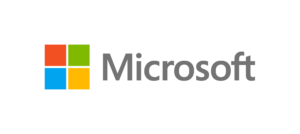






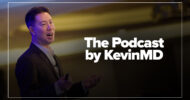
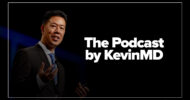
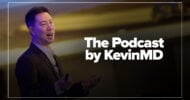







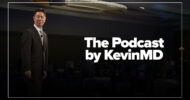


![A leader's journey through profound grief and loss [PODCAST]](https://kevinmd.com/wp-content/uploads/The-Podcast-by-KevinMD-WideScreen-3000-px-4-190x100.jpg)





